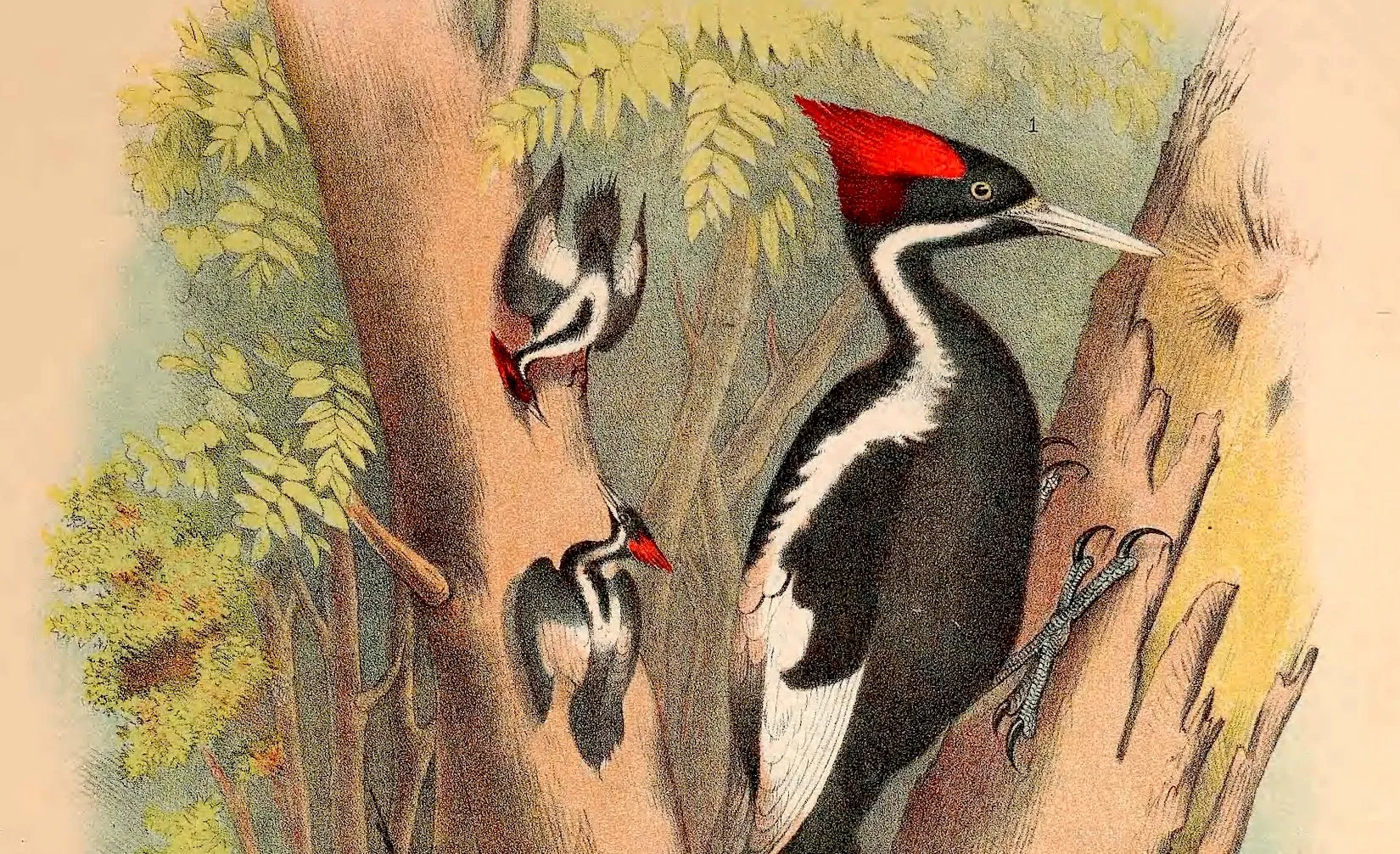Rediscovering the Ivory-Billed Woodpecker: The Phantom of America’s Forests
Introduction:
The Ivory-Billed Woodpecker, scientifically known as Campephilus principalis, was one of North America’s largest woodpeckers, renowned for its striking appearance and elusive nature. Often called the “Lord God Bird” due to its impressive size and striking plumage, the Ivory-Billed Woodpecker was last officially sighted in the mid-20th century. Habitat destruction and logging of the dense, old-growth forests of the southeastern United States contributed to its decline, leading to its presumed extinction. Despite numerous unconfirmed sightings, the Ivory-Billed Woodpecker remains a symbol of lost wilderness and the fragility of forest ecosystems.
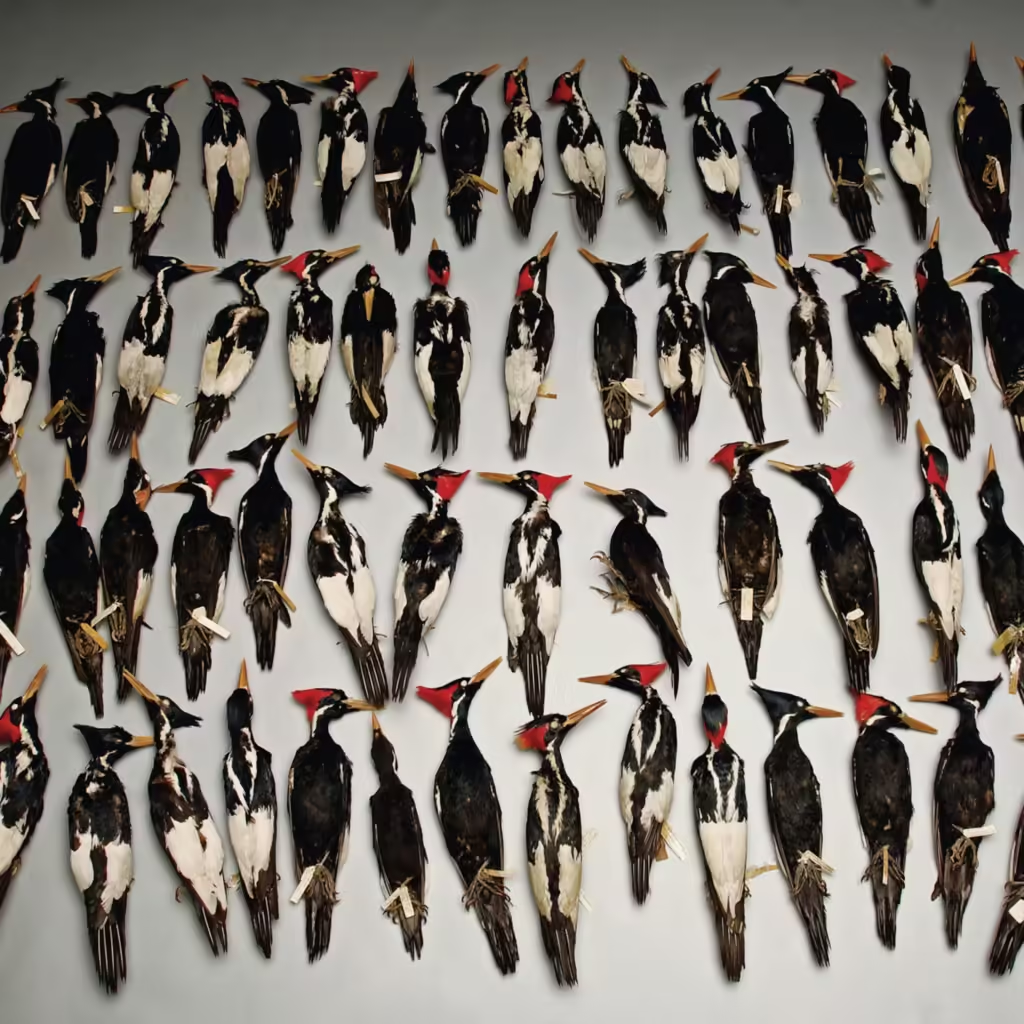
Facts:
| Attribute | Details |
|---|---|
| Scientific Name | Campephilus principalis |
| Common Names | Ivory-Billed Woodpecker, Lord God Bird |
| Year Declared Extinct | Presumed extinct in the 20th century, though unconfirmed sightings continue |
| Kingdom | Animalia |
| Phylum | Chordata |
| Class | Aves |
| Order | Piciformes |
| Family | Picidae |
| Genus | Campephilus |
| Species | C. principalis |
| Natural History and Origin | Native to the southeastern United States and Cuba |
| Physical Information | Large woodpecker, black and white plumage, with a distinctive ivory-colored bill |
| Appearance | Males had a prominent red crest, while females had a black crest |
| Scientist Names | Described by John James Audubon in the early 19th century |
| Region | Southeastern United States, Cuba |
Appearance:
The Ivory-Billed Woodpecker was a striking bird, measuring about 20 inches in length with a wingspan of up to 30 inches. Its plumage was predominantly black, with large white patches on the wings and a white stripe running down the neck. Males were easily identifiable by their vibrant red crests, while females had a black crest. The bird’s most distinctive feature was its large, ivory-colored bill, which it used to chisel away bark from dead trees in search of insects.
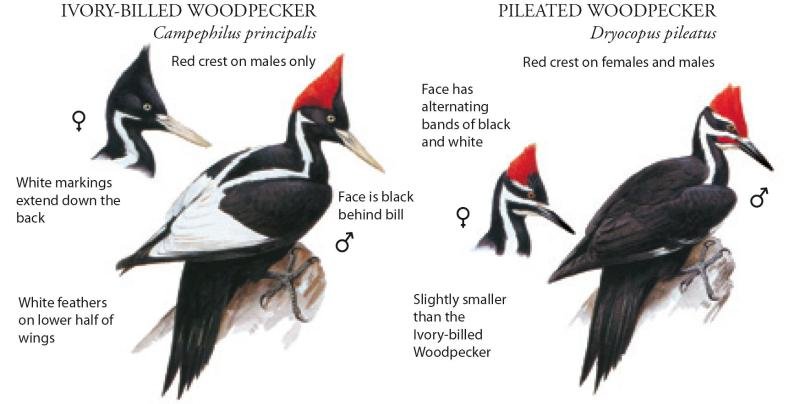
Distribution:
Historically, the Ivory-Billed Woodpecker was found in the dense, old-growth forests of the southeastern United States, particularly in swamps and bottomland hardwood forests. It was also found in parts of Cuba. The bird’s range included states such as Arkansas, Louisiana, and Florida.

Habits and Lifestyle:
Ivory-Billed Woodpeckers were diurnal birds, most active during the day. They preferred habitats with large tracts of old-growth forests, where they could find an abundance of dead and dying trees. These woodpeckers were known for their loud, distinctive calls and powerful drumming on trees. They nested in cavities high up in trees, laying eggs in the safety of their secluded nests.
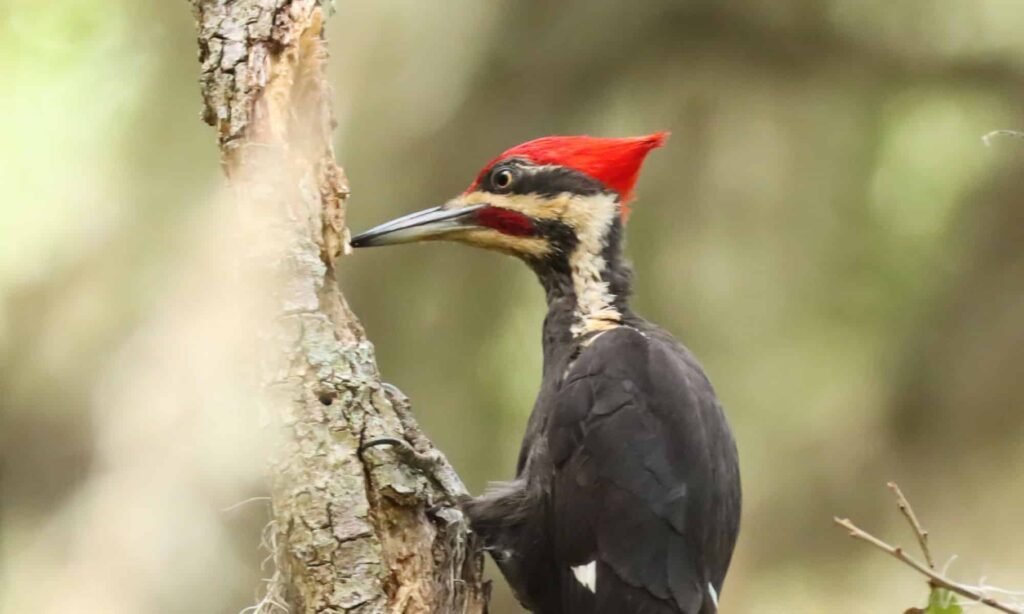
Physical Characteristics:
The Ivory-Billed Woodpecker was notable for its large size and striking appearance. Its powerful bill was adapted for chiseling through the bark of trees to find beetle larvae and other insects. The bird’s strong claws and stiff tail feathers provided support while climbing and foraging on tree trunks. Its plumage provided effective camouflage against the bark of trees, helping it blend into its forest habitat.
Diet and Nutrition:
The primary diet of the Ivory-Billed Woodpecker consisted of beetle larvae, particularly those of wood-boring beetles. It also fed on other insects, nuts, and fruits. The bird’s strong bill allowed it to strip bark from dead trees and access the insects underneath. It played a crucial role in controlling insect populations in its ecosystem.
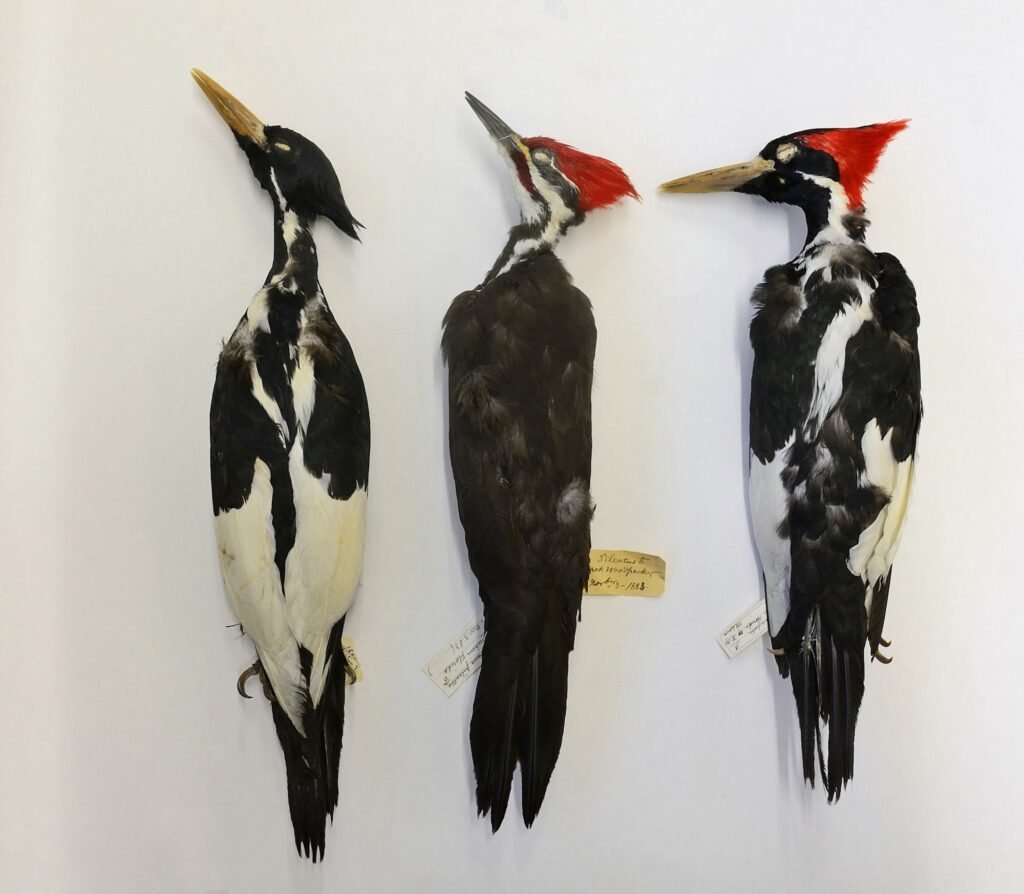
Behavior:
Ivory-Billed Woodpeckers were known for their solitary or pair-based behavior, often staying within a territory with abundant food sources. They communicated with loud calls and distinctive drumming sounds, which echoed through the forests. The birds were also highly territorial, defending their nesting and feeding areas from other woodpeckers and potential threats.
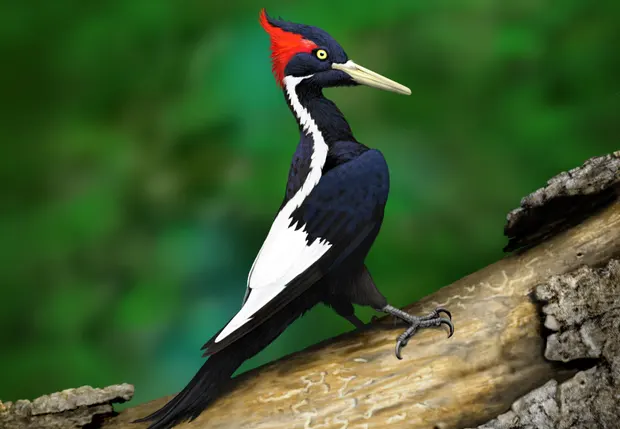
Cause of Extinction:
The primary cause of the Ivory-Billed Woodpecker’s decline was habitat destruction due to extensive logging of the old-growth forests in the southeastern United States. The loss of these forests, which provided essential nesting and feeding grounds, led to a severe decline in their population. Additionally, hunting and collection pressures in the 19th and early 20th centuries further contributed to their decline. Despite several unconfirmed sightings in recent years, the bird is considered critically endangered and possibly extinct.
FAQs:
| Question | Answer |
|---|---|
| What led to the decline of the Ivory-Billed Woodpecker? | Habitat destruction due to logging and deforestation, hunting, and collection pressures. |
| When was the last confirmed sighting of the Ivory-Billed Woodpecker? | The last widely accepted sighting was in the mid-20th century, although unconfirmed sightings continue. |
| What did the Ivory-Billed Woodpecker eat? | Its diet primarily consisted of beetle larvae, other insects, nuts, and fruits. |
| Why is the Ivory-Billed Woodpecker significant? | It serves as a symbol of the impact of habitat destruction on wildlife and the importance of conservation. |
| Are there efforts to rediscover the Ivory-Billed Woodpecker? | Yes, several expeditions and searches have been conducted, but no conclusive evidence has been found. |
Ivory-Billed Woodpecker, Campephilus principalis, Lord God Bird, extinct woodpecker species, North American wildlife, habitat destruction, old-growth forests, southeastern United States, conservation efforts, bird watching, unconfirmed sightings, forest ecosystems, historical extinctions, endangered birds, natural history, woodpecker behavior, beetle larvae diet, bird conservation, ecological impact, wildlife preservation.
Categories:
- Extinct Birds
- North American Wildlife
- Conservation Efforts
- Forest Ecosystems
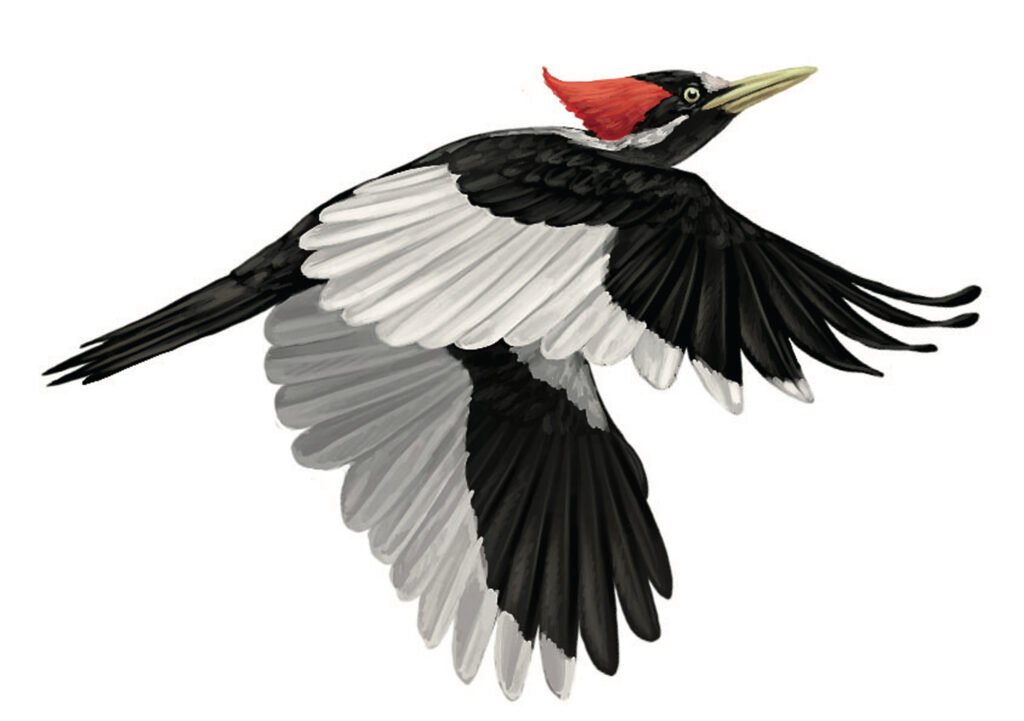
Views: 7
